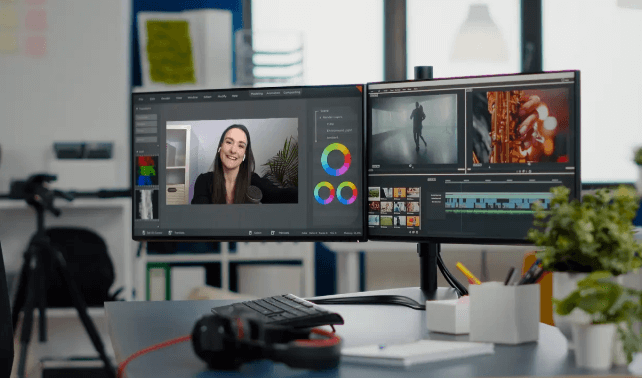Mastering the Basics of Video Editing: A Beginner’s Guide

Understanding the fundamentals of video editing is crucial for any aspiring creator aiming to produce impactful visual content. Mastery of software tools, essential techniques, and efficient organization forms the backbone of effective storytelling. By grasping these foundational elements, beginners can enhance their projects and better engage audiences. However, the journey does not end with basic skills; it is merely the beginning of a more intricate process that can significantly elevate the quality of your work. What lies ahead may redefine your approach to video editing and storytelling altogether.
Understanding Video Editing Software
Understanding video editing software is crucial for both novice and experienced editors alike.
Mastery begins with interface navigation, which enhances efficiency and creativity. Familiarity with different tools allows editors to manipulate footage seamlessly.
Additionally, ensuring software compatibility with various formats is essential for smooth workflows. By grasping these foundational elements, editors can unlock their artistic potential and produce compelling visual narratives.
Essential Video Editing Techniques
Mastering video editing software sets the stage for the application of key editing techniques that enhance storytelling and visual engagement.
Employ cutting techniques for seamless transitions, utilize color correction to evoke emotions, and implement audio mixing to create a balanced soundscape.
Integrate storytelling elements through careful clip sequencing and apply pacing strategies to maintain viewer interest.
These techniques elevate your narrative and artistic expression.
Tips for Organizing Your Footage
Organizing your footage is a crucial step that can significantly streamline the editing process.
Implement a coherent folder structure alongside effective file naming conventions to facilitate quick access.
Utilize metadata tagging for efficient footage sorting, allowing for seamless project management.
Don’t overlook backup strategies; maintaining multiple copies ensures your hard work remains safe and accessible during the editing journey.
Adding Effects and Transitions
Enhancing your video with effects and transitions can elevate its visual appeal and narrative flow.
Utilize color grading to establish mood and maintain consistency throughout your project.
Seamlessly integrate sound design to complement visual transitions, creating an immersive experience.
Experiment with various effects to add dynamism, ensuring they enhance rather than distract from your story.
Balance is key to achieving a polished final product.
Exporting and Sharing Your Videos
After refining your video with effects and sound design, the next step is to prepare it for distribution.
Choose the appropriate video formats, such as MP4 for compatibility or MOV for quality, ensuring optimal playback across various devices.
Once exported, leverage popular sharing platforms like YouTube, Vimeo, or social media to reach your audience, embracing the freedom to express your creativity widely.
Conclusion
In conclusion, mastering the basics of video editing is crucial for producing compelling visual narratives. Effective navigation of software, coupled with an understanding of essential techniques, organization, and strategic use of effects, enhances storytelling capabilities. For instance, a filmmaker may utilize color correction to evoke emotions, creating a more impactful experience for the audience. By implementing these foundational skills, aspiring editors can significantly elevate their projects and expand their audience reach, ultimately fostering a deeper connection with viewers.




